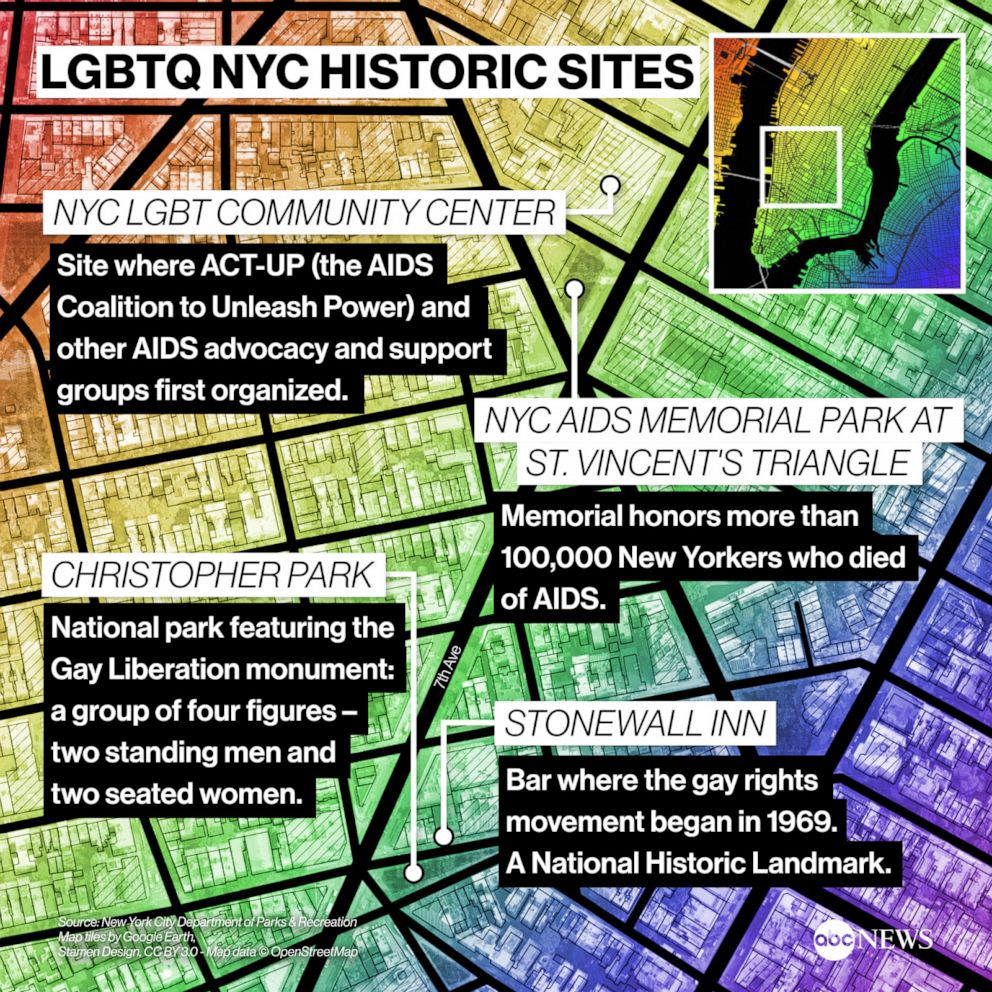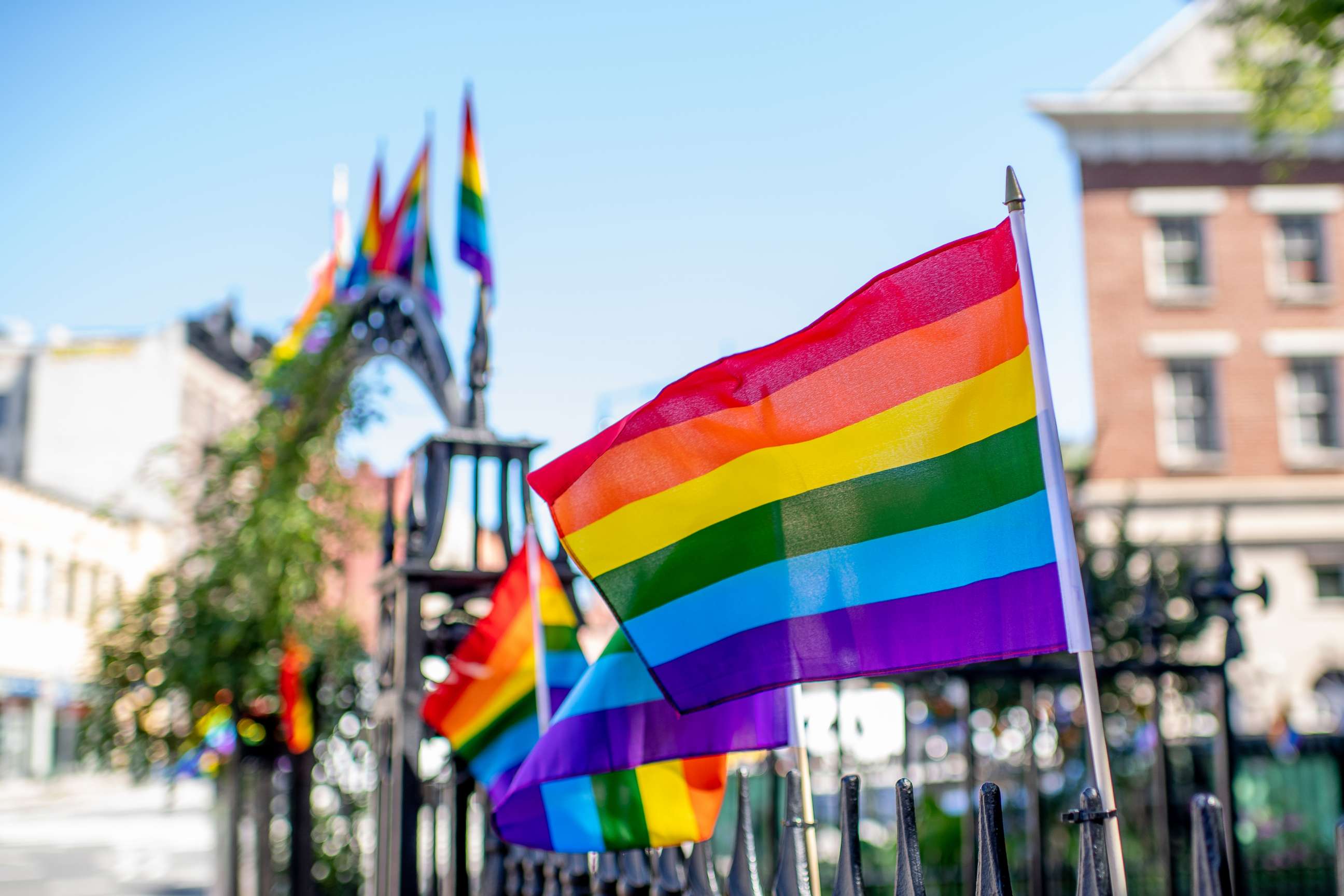LGBTQ+ historical tour showcases landmarks of the gay rights movement
The community's history is "not just Stonewall. It's American history."
For Michael Venturiello, it all started at Stonewall. He was a queer 20-something from upstate when he took the train to New York City one summer to visit friends. Wandering around Greenwich Village, Venturiello spotted that iconic neon sign framed by the classic brick wall and a swath of rainbows waving in the wind.
“Oh my gosh, is this the Stonewall? Like the Stonewall Inn?” he asked.
“Yeah, let's go grab a drink,” his friend replied.
So, they went inside and made their way to the bar, but it wasn’t just a cocktail hour for Venturiello.

“It was just this moment of awakening and realization for me that this history isn't just a dead history. It's a living history where we can learn about the uprising and why that matters and why that's so important,” Venturiello said. Now Venturiello, 31, hopes to give queer youth a similar experience by leading LGBTQ historical tours in that same neighborhood he explored when he was 24 years old.
He started Christopher Street Tours a few years ago when he was looking for a year-round LGBTQ history tour and couldn’t find one. On these tours, he leads patrons to landmarks such as Stonewall, but also the LGBT Community Center, highlighting the past and present of New York's queer community.
The walking tour kicks off in McCarthy Square, where members of the group introduce themselves and Venturiello outlines what they will see. The spot is a block away from the first stop on the tour: Julius, a gay bar with a unique history. It’s known as the site of the first national gay rights protest: the “sip-in” of 1966.
An early gay rights group called The Mattachine Society challenged the New York State Liquor Authority, saying that bars couldn’t serve drinks to anyone who identified as or was perceived as homosexual. Venturiello explained that when the bartender refused to serve members of the society, they remained in their seats, unwavering in their protest.

Venturiello opened a black binder to reveal a black-and-white photograph of the event, and the three spectators leaned in to get a closer look.
From there, the group made their way to the next stop, a stately brick building with pillars, extravagant stained glass, and a clock tower casting a shadow onto the street below.
“I would love to garner any guesses as to what this building is,” said Venturiello.
“A church?” someone volunteered.
“It would be a beautiful church, but it's actually part of our New York Public Library system, The Jefferson Market Public Library.”
Still, the library wasn’t why the group stopped there. The building used to be a courthouse, and next to it once stood The Women's House of Detention, connected through an underground tunnel. Until 1974, the ten-story building held hundreds of queer women and trans people accused of committing crimes, often in crammed cells of six to eight people.
Other stops included Gay Street, Christopher Street, and finally Stonewall, where Venturiello quizzed the group on the history of the uprising that took place there.

“In 1969 there were a bunch of gay people at the Stonewall Inn and the police came in and were trying to arrest all of them,” said Leah, 22. “Then they [the patrons] started throwing stuff at them and then there was a riot. And it’s recognized as kicking off the gay rights movement.” Venturiello expanded on that idea, filling in further details and the group took a photo.
Nearby, the group stopped at Christopher Park Gay Liberation Monument and then walked to St. Vincent's Hospital, “ground zero” of the AIDS epidemic in New York City, and to the nearby NYC AIDS Memorial Park shortly after, dedicated to the 100,000+ New Yorkers who have died of AIDS.
The tour ended at the LGBT Community Center, where the group saw an original mural by Keith Haring and visited an LGBTQ book shop.
“LGBTQ history is not just pride, and it's not just Stonewall. It's American history. It’s a global history, and people want to learn about it all year round,” Venturiello said.




